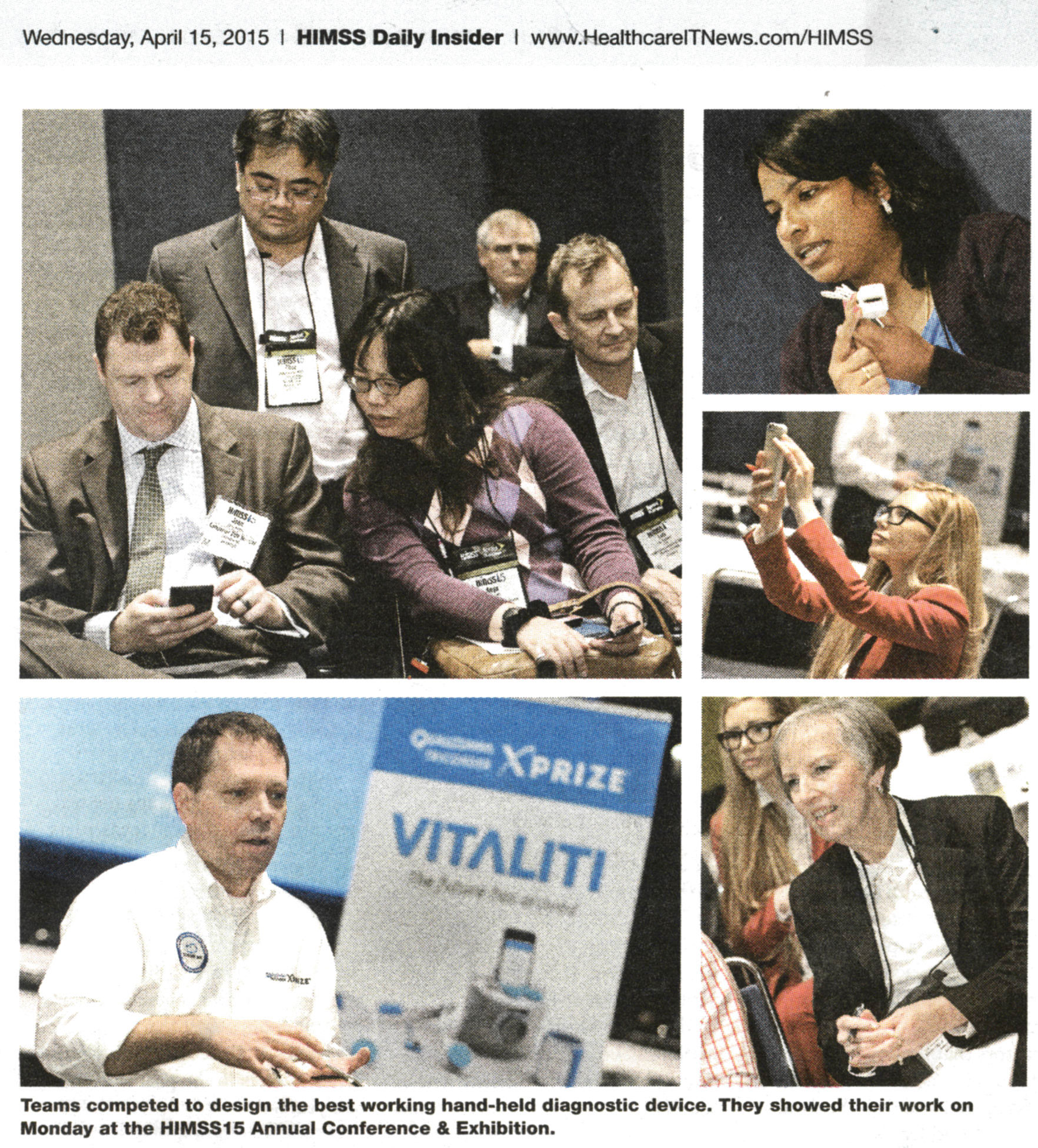XPRIZE competitors show off their high-concept tricorders

Let's get something out of the way right now: The competitors in the Qualcomm Tricorder XPRIZE competition aren't making a device that looks like the old cassette tape recorder that Bones McCoy carried around the USS Enterprise. And their solutions aren't going to make "the sound" that Trekkies recall so fondly.
Then again, "we still have eight weeks to go," says Robert Kaul, founder and president of CloudDx, one of the eight finalists, with a chuckle.
Kaul was on hand Monday afternoon at the HIMSS15 Conference and Exhibition to show off his team's offering, called the Vitaliti.
"It's a little nerve-wracking right now," he confessed to an audience of roughly two-dozen people.
Launched in 2012, the $10 million global competition uses the iconic Star Trek device to envision a consumer-facing mHealth monitor that can accurately diagnose 15 different globally prevalent medical conditions, ranging from anemia to tuberculosis, and capture five vital health metrics from the comfort of one's home, office or wherever.
Among the many conditions: It can't weigh more than five pounds, it has to be "safe, desirable and fun for consumers," and it's ultimate goal is to empower people "to take charge of their health."
No mention of "the sound," by the way.
"When we thought about healthcare, we knew the concept of the medical tricorder has been around a long time," said Grant Campany, senior director of the Qualcomm Tricorder XPRIZE (as well as the Nokia Sensing XCHALLENGE). They also know that the product would have to be "independent of the healthcare professional," in that it's designed to be used by the consumer.
“We're going to have a diagnostic device that's going to be in the palm of your hand in the next couple of years," predicted Rick Valencia, senior vice president of Qualcomm Life.
But if you're envisioning the Star Trek device, think again. CouldDx's offering, so far, consists of five separate elements, focused on a horseshoe-shaped device worn around the neck that, among other things, allows for continuous ECG monitoring for 72 hours. An attached earpiece measures pulse oximetry and temperature, while a small in-vitro diagnostic platform similar to a blood glucose testing kit can draw seven different assays from a small drop of blood. There's also a miniaturized camera with a built-in spirometer, and all of this synchs with a smartphone app that draws in all the data, including responses to a questionnaire, to make a diagnosis.
Kaul said his company plans to first offer the Vitaliti as a "lifestyle device" while it seeks FDA approval – which can take up to of 18 months – for classification as a medical device. Users would be able to download the app, then go to Amazon or run out to the nearest pharmacy or Best Buy to pick up the rest of the kit.
Also on hand was Danvantri, an India-based team that showed off the aptly named Treknosis. Team leader Sridharan Mani showed off the array of sensors that all tie into a small, matchbox-shaped device called the body organ life tracker, or BOLT.
Mani said the platform not only tracks vital signs and gives users a diagnosis, but can be programmed through an API by the provider to send a different set of results to clinicians, depending on what they want to track.